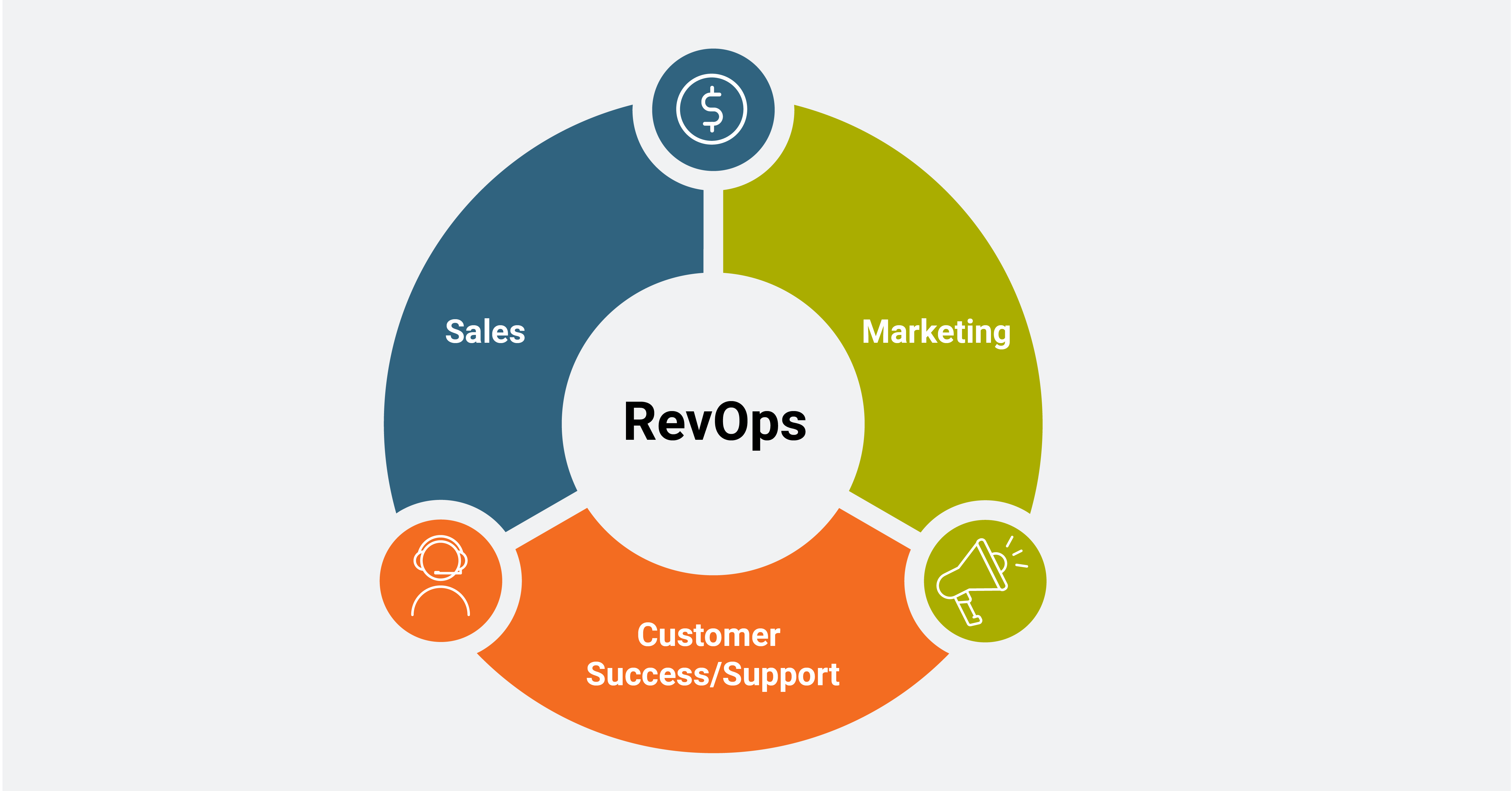
The Revenue Operations or RevOps concept has been around for about two decades. However, most small and medium-sized businesses still seem to look at this model as something for large corporations only. But RevOps can be applied to any company of any size so long as the company has the desire to align all go-to-market functions (sales, marketing, and customer success/support) into one unified stream to increase revenue.
Essentially, teams that drive revenue are aligned across the entire funnel to maximize success.

These days, RevOps has become an essential function for any business trying to stay competitive. According to Gartner, 75% of the highest-growth companies will have adopted a RevOps model by 2025. They state that functional silos act as a barrier to revenue growth.
Hubspot, in a review of over 800 companies, found that growth was much greater (23.10%) in companies that used unified RevOps goal setting than in those that used unified structured goal setting (18.94%). Clearly, RevOps has become the most effective way to structure GTM functions and set goals.
So, if other companies are adopting a RevOps team structure, can yours afford not to?
What Does a Typical RevOps Team Structure Look Like?
Most businesses are used to separating their GTM functions into silos that collect their data, look at different analytics, use different tech stacks, and set their goals. But things can get messy when customer success/support isn’t sharing data with marketing or if sales are setting goals based on their needs. And you can be sure that revenue growth will certainly not be maximized.
Under a RevOps team structure, things look different.
Sales, marketing, and customer success/support are brought under one umbrella, usually under a Chief Revenue Officer or a Director of Operations. But rather than keeping personnel in their silos, they are distributed by function — for example, a systems analyst who can work with both sales and marketing systems data
So, what do you do in a very small company with extremely limited resources for RevOps? How can you structure a RevOps function with a tiny team or even one person?
Even the smallest businesses can set up a RevOps function, provided it has the support of the organization. At a minimum, RevOps needs to be able to collect data from all GTM functions, align data and technical systems, set goals that make sense across the funnel, and document the rule of engagement in a Revenue Operations playbook.
RevOps should manage all revenue-producing activities, enable the training of employees and development of automation solutions, leverage all revenue-based data, and unify all relevant tools and procedures.
This can be difficult and can definitely shake things up, even creating a lot of resistance. However, modern companies have found that it’s worth it if they want to grow revenue, reduce waste, and stay competitive.
How Can You Set Up RevOps for Your Business?
If you have a small or mid-sized business, it can actually be easier to set up a RevOps function compared to larger companies with more entrenched structures. Smaller usually means more flexible and quicker to change. So here are some suggestions for how to set up RevOps with only a small team or even a single person.
Work With Other GTM Functions
RevOps should have access to all GTM departments/functions to enable collaboration across these teams and autonomy to lead decision-making that will affect all of their initiatives. The RevOps lead needs to be in line with the company’s business objectives and make decisions to meet the company’s revenue goals. For smaller businesses, collaboration is essential to take advantage of input across all departments and use everyone’s expertise to create the best set of metrics and goals possible.
Leverage Automation
Automated platforms can help to reduce waste and improve integration between departments to save time and human resources. They play a crucial role in improving efficiency and streamlining processes so that a small team can do more with less. Apps and software stacks can make any small team instantly bigger and more effective.
Develop a Strategy and Get Buy-In
If you want to transition to a RevOps function smoothly, you need a strategy that people can get behind. Getting team leaders/functions to give input is excellent, but they also have to be convinced of the value of restructuring with RevOps at the core of GTM functions. When all involved have a shared goal, increasing revenue, it can make it that much easier to make decisions and create the right initiatives.
Adopt an Agile Mindset
Build a RevOps function that’s prepared to react to change quickly and effectively. An agile mindset can help set KPIs quickly, build teams as needed, iterate often, and change course quickly when necessary. The customer should be seen as a collaborator, and the software should be efficient and flexible to lead your team to success.
When Should You Leverage a RevOps Agency?
Setting up a RevOps function as a small team or even a single person can be challenging. You need to learn from GTM teams about their parts of the business, then use this to build processes, implement new tech, retrain teams, and centralize data and goal setting. This sounds daunting, but leveraging a RevOps agency can help.
As a B2B marketing agency that has helped companies like yours set up their RevOps engine, we can partner with you to create your RevOps solution as an organizational approach to generating revenue.
Whether it's helping you plan and set up your structure, filling gaps in your team, or providing guidance on how best to craft the RevOps team structure for your business, rest assured we have you covered.





